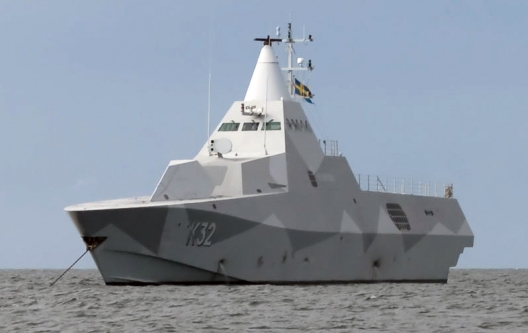 At the end of the Cold War, Swedish submarine hunters commanded an arsenal featuring depth charges, torpedoes, and anti-submarine-warfare grenades, and surface submarine hunters were aided by a large number of helicopters, which easily spot movements in the water. Now, however, “we’ve got rid of our more modern weapons,” says Göran Frisk, a naval commander and top submarine hunter until his retirement 12 years ago. “The Russians can do whatever they like in Swedish waters as long as they’re not careless, because in that case a Swedish warship can shoot and disable them.”
At the end of the Cold War, Swedish submarine hunters commanded an arsenal featuring depth charges, torpedoes, and anti-submarine-warfare grenades, and surface submarine hunters were aided by a large number of helicopters, which easily spot movements in the water. Now, however, “we’ve got rid of our more modern weapons,” says Göran Frisk, a naval commander and top submarine hunter until his retirement 12 years ago. “The Russians can do whatever they like in Swedish waters as long as they’re not careless, because in that case a Swedish warship can shoot and disable them.”
Following a series of budget cuts starting the late 1990s, the naval commandos defending Sweden’s 2,700-kilometer coastline find themselves rather modestly equipped in the fight against underwater intruders, with just seven torpedo-armed corvettes (small warships), four submarines and one marine battalion. In March, the government announced an ambitious naval investment program that includes the purchase of two new submarines and the upgrade of existing corvettes. But that process will take years.
“Today we’re naked,” says retired Admiral Nils-Ove Jansson, a top submarine hunter in Swedish antisubmarine operations during the 1980s and 1990s. “The little equipment we have is good, but otherwise the situation is dreadful. The risks involved with intruding into Swedish waters are so negligible that the biggest risk facing a sub is that it has an accident….”
Jansson, who’s also a former deputy director of the Swedish military intelligence agency, MUST, and a leading authority on Russian military espionage, argues that the Soviet Union’s snooping on its largest Scandinavian neighbor has returned in Russian guise, with an undeniable logic to it. “The Russians suspect that Sweden and Finland are not really independent of NATO,” he explains. “With their submarine activities, they’re preparing to put nuclear mines in Swedish locations likely to host NATO naval units. And their TU-22M supersonic bomber airplanes that fly towards Swedish airspace are testing the course of their missiles, which they’d direct against locations that may host NATO air force units….”
A Russian air incursion on May 21 is reported to have targeted a state-of-the-art southern Swedish airbase recently used by the Nordic Battle Group, which includes several NATO members. Until reinforcements arrive, the Swedish navy will have no choice but to keep vigilantly patrolling its waters, hoping that unwelcome guests will do themselves in.
Elisabeth Braw is a correspondent for Newsweek, which she joined following a fellowship at the University of Oxford.
Image: Swedish corvette HMS Helsingborg, June 30, 2008 (photo: Xiziz)
